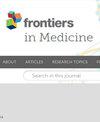术中潮气末二氧化碳水平与胰腺癌择期手术后无复发生存率无关:一项回顾性队列研究
IF 3.1
3区 医学
Q1 MEDICINE, GENERAL & INTERNAL
引用次数: 0
摘要
背景术中潮气末二氧化碳浓度(EtCO2)值与结直肠癌术后无复发生存率有关。然而,在其他外科手术后是否也能观察到类似的影响还不得而知。方法在这项单中心回顾性队列研究中,我们分析了 2009 年至 2016 年期间在海德堡大学医院接受胰腺癌择期切除术的 652 名患者。根据术中平均 EtCO2 值对整个患者队列进行升序排序,然后分为两组:高 EtCO2 组和低 EtCO2 组。预设的主要终点是评估截至最后一次已知随访的无复发生存率。心血管事件、手术部位感染、败血症、住院期间的再次手术以及总生存率是预先设定的次要结果。结果 低EtCO2组的平均EtCO2为33.8 mmHg ±1.1,而高EtCO2组为36.8 mmHg ±1.9。中位随访时间为 2.6 年(Q1:1.4;Q3:4.4)。高EtCO2组和低EtCO2组的无复发生存率没有差异[HR = 1.043 (95% CI: 0.875-1.243), log rank test: p = 0.909]。通过 Cox 分析研究了影响主要终点的因素,结果表明平均 EtCO2 水平与无复发生存率之间没有相关性[系数 -0.004,HR = 0.996 (95% CI:0.95-1.04); p = 0.871]。结论在择期胰腺癌手术中,麻醉师应根据肿瘤结果以外的原因设定 EtCO2 目标,直到获得前瞻性多中心随机对照试验的确凿证据为止。本文章由计算机程序翻译,如有差异,请以英文原文为准。
Intraoperative end-tidal carbon dioxide levels are not associated with recurrence-free survival after elective pancreatic cancer surgery: a retrospective cohort study
BackgroundIntraoperative end-tidal carbon dioxide concentrations (EtCO2 ) values are associated with recurrence-free survival after colorectal cancer surgery. However, it is unknown if similar effects can be observed after other surgical procedures. There is now evidence available for target EtCO2 and its relation to surgical outcomes following pancreatic cancer surgery.MethodsIn this single-center, retrospective cohort study, we analyzed 652 patients undergoing elective resection of pancreatic cancer at Heidelberg University Hospital between 2009 and 2016. The entire patient cohort was sorted in ascending order based on mean intraoperative EtCO2 values and then divided into two groups: the high-EtCO2 group and the low-EtCO2 group. The pre-specified primary endpoint was the assessment of recurrence-free survival up to the last known follow-up. Cardiovascular events, surgical site infections, sepsis, and reoperations during the hospital stay, as well as overall survival were pre-specified secondary outcomes.ResultsMean EtCO2 was 33.8 mmHg ±1.1 in the low-EtCO2 group vs. 36.8 mmHg ±1.9 in the high-EtCO2 group. Median follow-up was 2.6 (Q1:1.4; Q3:4.4) years. Recurrence-free survival did not differ among the high and low-EtCO2 groups [HR = 1.043 (95% CI: 0.875–1.243), log rank test: p = 0.909]. Factors affecting the primary endpoint were studied via Cox analysis, which indicated no correlation between mean EtCO2 levels and recurrence-free survival [Coefficient −0.004, HR = 0.996 (95% CI:0.95–1.04); p = 0.871]. We did not identify any differences in the secondary endpoints, either.ConclusionsDuring elective pancreatic cancer surgery, anesthesiologists should set EtCO2 targets for reasons other than oncological outcome until conclusive evidence from prospective, multicenter randomized controlled trials is available.
求助全文
通过发布文献求助,成功后即可免费获取论文全文。
去求助
来源期刊

Frontiers in Medicine
Medicine-General Medicine
CiteScore
5.10
自引率
5.10%
发文量
3710
审稿时长
12 weeks
期刊介绍:
Frontiers in Medicine publishes rigorously peer-reviewed research linking basic research to clinical practice and patient care, as well as translating scientific advances into new therapies and diagnostic tools. Led by an outstanding Editorial Board of international experts, this multidisciplinary open-access journal is at the forefront of disseminating and communicating scientific knowledge and impactful discoveries to researchers, academics, clinicians and the public worldwide.
In addition to papers that provide a link between basic research and clinical practice, a particular emphasis is given to studies that are directly relevant to patient care. In this spirit, the journal publishes the latest research results and medical knowledge that facilitate the translation of scientific advances into new therapies or diagnostic tools. The full listing of the Specialty Sections represented by Frontiers in Medicine is as listed below. As well as the established medical disciplines, Frontiers in Medicine is launching new sections that together will facilitate
- the use of patient-reported outcomes under real world conditions
- the exploitation of big data and the use of novel information and communication tools in the assessment of new medicines
- the scientific bases for guidelines and decisions from regulatory authorities
- access to medicinal products and medical devices worldwide
- addressing the grand health challenges around the world
 求助内容:
求助内容: 应助结果提醒方式:
应助结果提醒方式:


